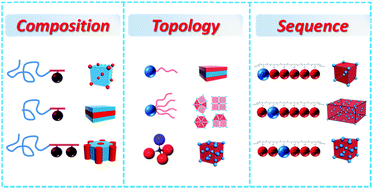Engineering self-assembly of giant molecules in the condensed state based on molecular nanoparticles
Abstract
In biological systems, it is well-known that the activities and functions of biomacromolecules are dictated not only by their primary chemistries, but also by their secondary, tertiary, and quaternary hierarchical structures. Achieving control of similar levels in synthetic macromolecules is yet to be demonstrated. Most of the critical molecular parameters associated with molecular and hierarchical structures, such as size, composition, topology, sequence, and stereochemistry, are heterogenous, which impedes the exploration and understanding of structure formation and manipulation. Alternatively, in the past few years we have developed a unique giant molecule system based on molecular nanoparticles, in which the above-mentioned molecular parameters, as well as interactions, are precisely defined and controlled. These molecules could self-assemble into a myriad of unconventional and unique structures in the bulk, thin films, and solution. Giant molecules thus offer a robust platform to manipulate the hierarchical structures via precise and modular assemblies of building blocks in an amplified size level compared with small molecules. It has been found that they are not only scientifically intriguing, but also technologically relevant.

- This article is part of the themed collection: Soft Matter 15th Anniversary Perspectives


 Please wait while we load your content...
Please wait while we load your content...